Broken Open. Curated by Cristina Anglada
Mercedes Azpilicueta, Esperanza Collado, Marius Engh, Ana Martínez Fernández, Mónica Mays, Alex Reynolds, Alfredo Rodríguez, Víctor Santamarina, Yann Sérandour, M Reme Silvestre, Álvaro Urbano, Kristin Wenzel y Leticia Ybarra
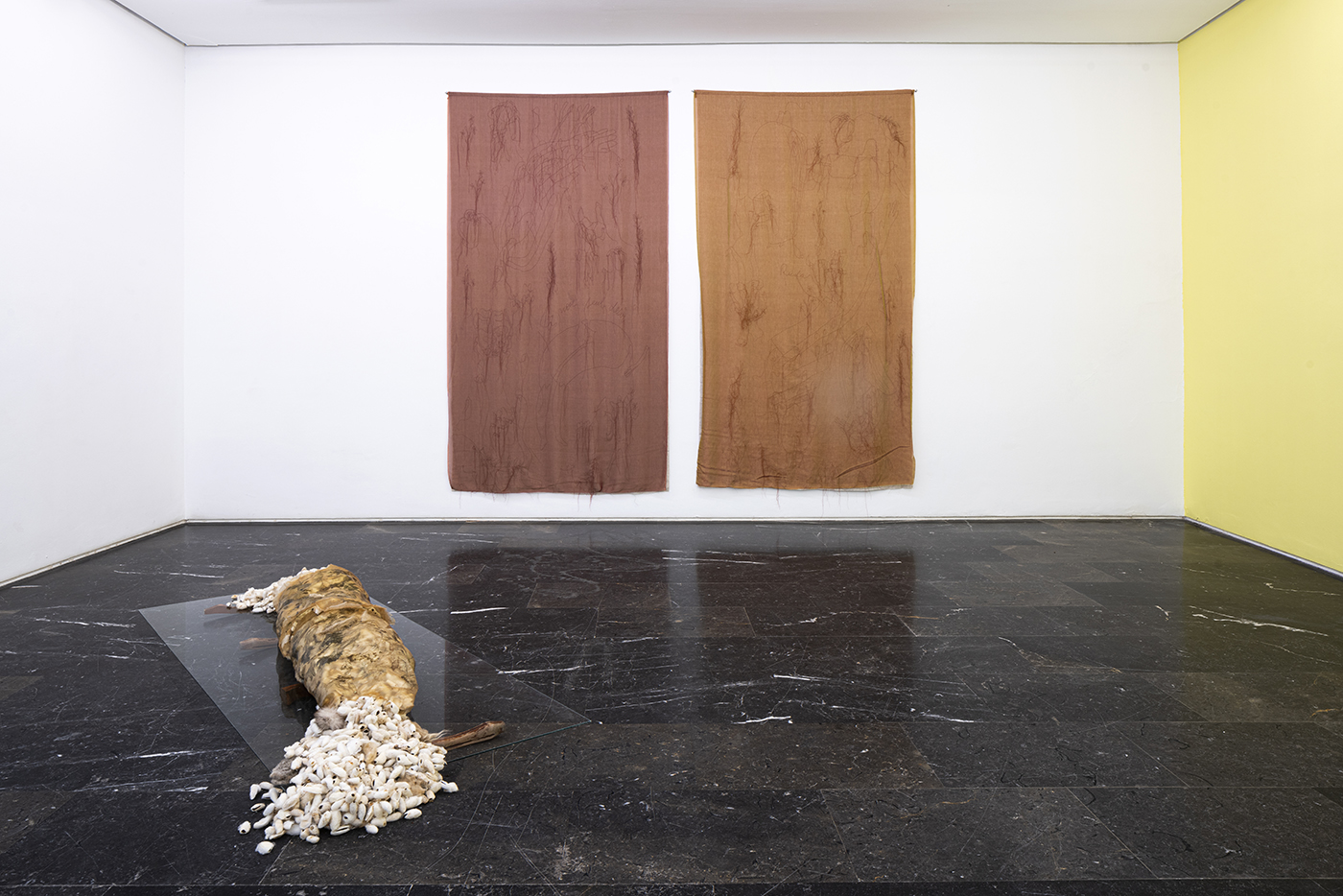
Broken Open, 2022. Room 1. General view
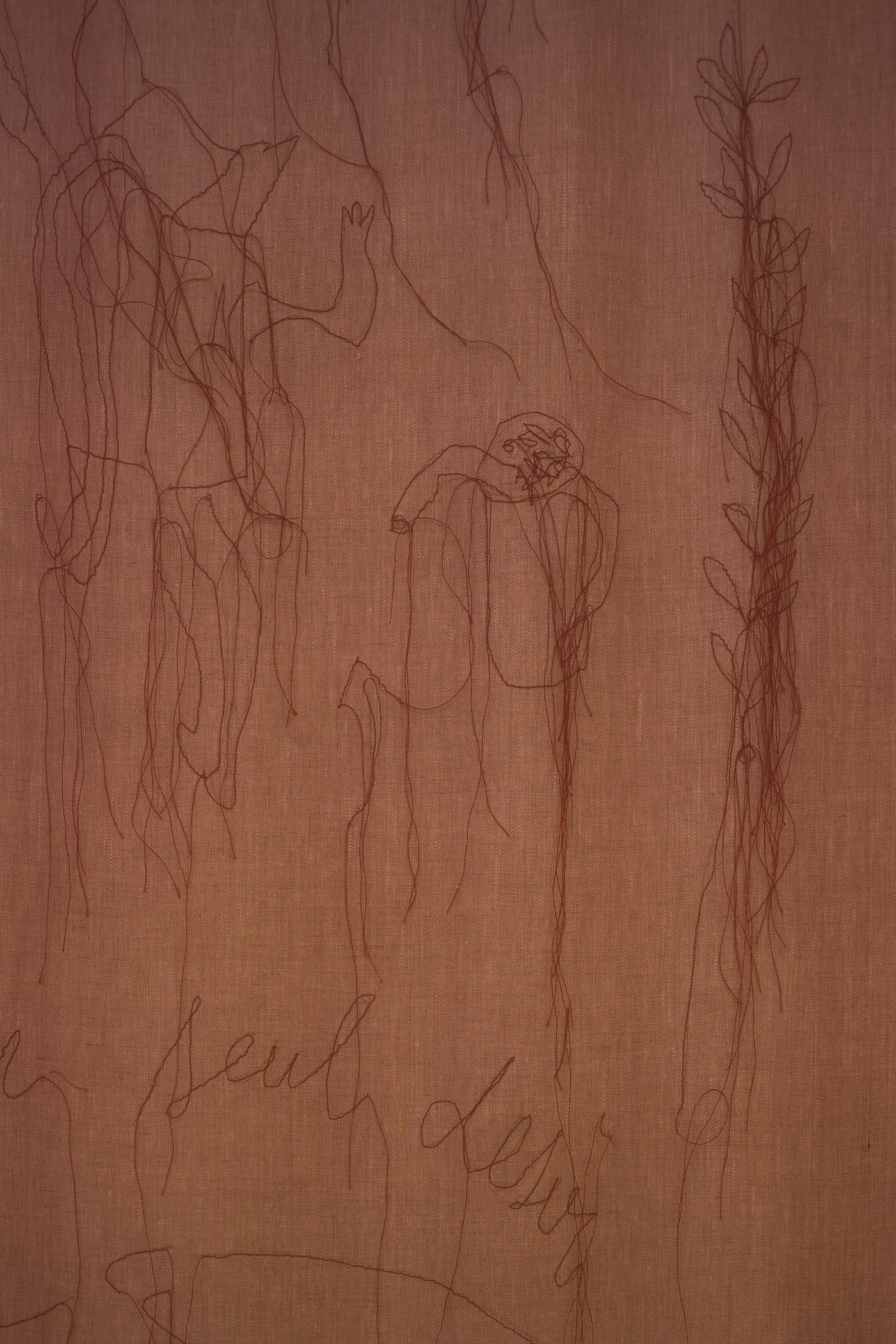
Mercedes Azpilicueta. À mon seul dèsir, 2019. Natural linen, two-tone natural silk, thread. 250 x 140 cm

Broken Open, 2022. Room 1. General view

Mónica Mays. Chrysalid (Tending Towards), 2022. Sheepskin, flowers, leaves, silk cocoons, raw wool, glass, wood. 80 x 200 x 30 cm

Broken Open, 2022. Room 1. General view

Mónica Mays. Broken Chair, 2022. Wood, rattan, locksmith. 45 x 36 x 8 cm

Broken Open, 2022. Room 1. General view
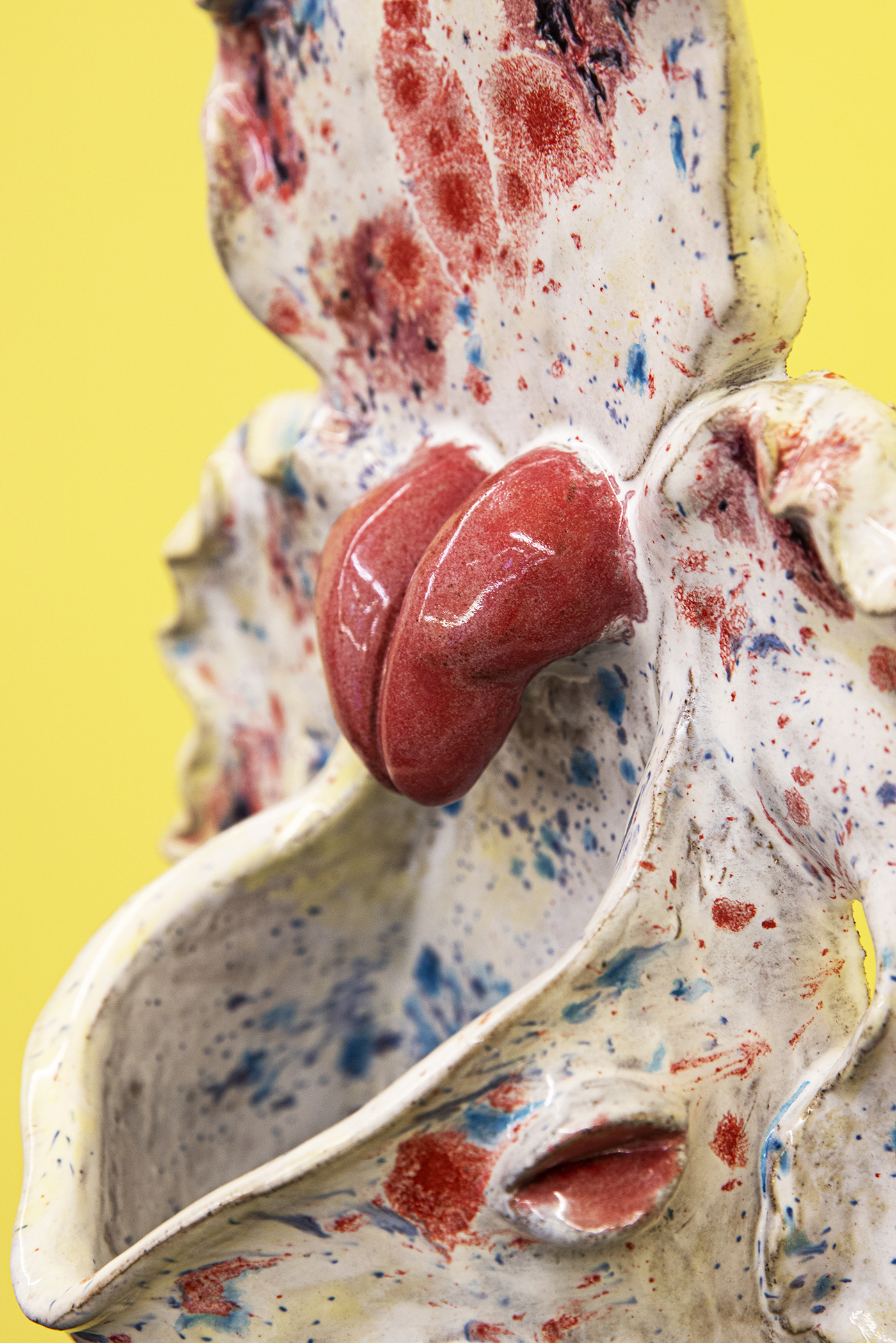
Kristin Wenzel. Pearl, 2022. Enamelled ceramic, nickel plated. 48 x 26 x 17 cm

Kristin Wenzel. Hazel, 2020. Enamelled ceramic, nickel plated. 23 x 28 x 8 cm

Broken Open, 2022. Room 1. General view

Álvaro Urbano. He would always leave a window open, even at night, 2022. Metal and paint. Variable dimensions

Kristin Wenzel. Lillith, 2020. Enamelled ceramic, nickel plated. 35 x 33 x 6 cm

Broken Open, 2022. Room 1. General view

Mónica Mays. Tending Towards, 2022. Sheepskin, flowers, leaves, led. 56 x 38 x 19 cm / 65 x 30 x 15 cml
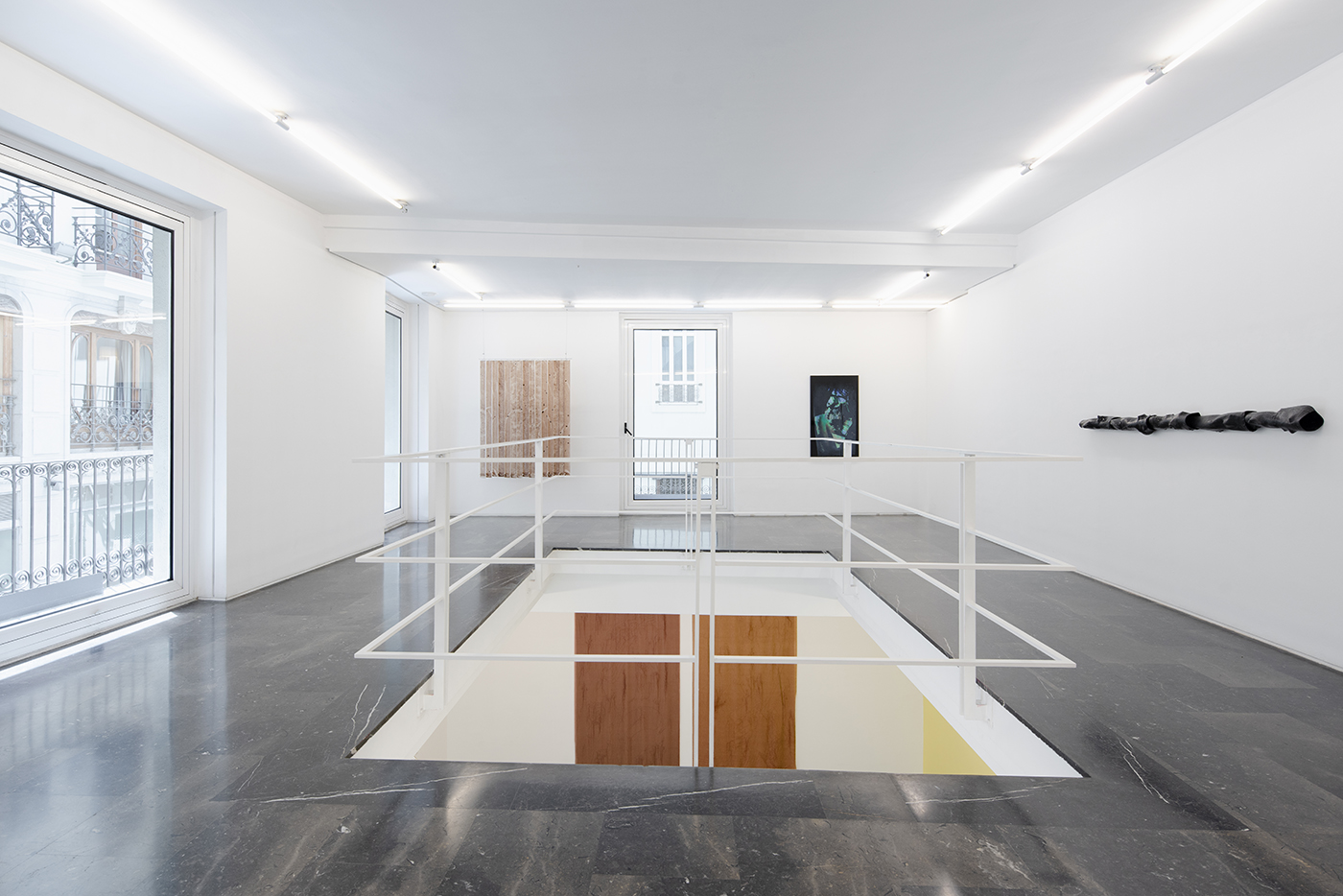
Broken Open, 2022. Room 2. General view

Ana Martínez Fernández. Cortina (serrín), 2021. Silicone, sawdust, wood, plastic and aluminum. 120 x 150 x 3 cm

Ana Martínez Fernández. Cortina (serrín), 2021. Silicone, sawdust, wood, plastic and aluminum. 120 x 150 x 3 cm. Detalle

Broken Open, 2022. Room 2. General view

Alfredo Rodríguez. Darkyoga, 2016. Holographic emulsion, resin, glass, lacquered aluminum. 110 x 65 cm

Broken Open, 2022. Room 2. General view

M Reme Silvestre. Sin título, 2019. Arm covers, black dye, epoxy resin, nutritional supplement powder, boric acid. 14 x 230 x 16 cm

Broken Open, 2022. Room 2. General view

Marius Engh. Double Fantasy # 1 - 4, 2015. Photography, inkjet on matte paper and stamp.
68 x 51.5 cm

Ana Martínez Fernández. Gorra I (hilo), 2021. Epoxy resin, canvas thread. 31 x 42 x 12 cm / Gorra III (hilo), 2021. Epoxy resin, canvas thread. 61 x 42 x 12 cm

Ana Martínez Fernández. Gorra I (hilo), 2021. Epoxy resin, canvas thread. 31 x 42 x 12 cm

Broken Open, 2022. Room 3. General view

Esperanza Collado. Loose Ends, 2022. Installation with loop film (super 16mm, b/w and color, 4’), roll of felt (80 cm x 10 m), adhesive vinyl (2 x 3.90 m) and 12 pieces of clay and plaster. Detail
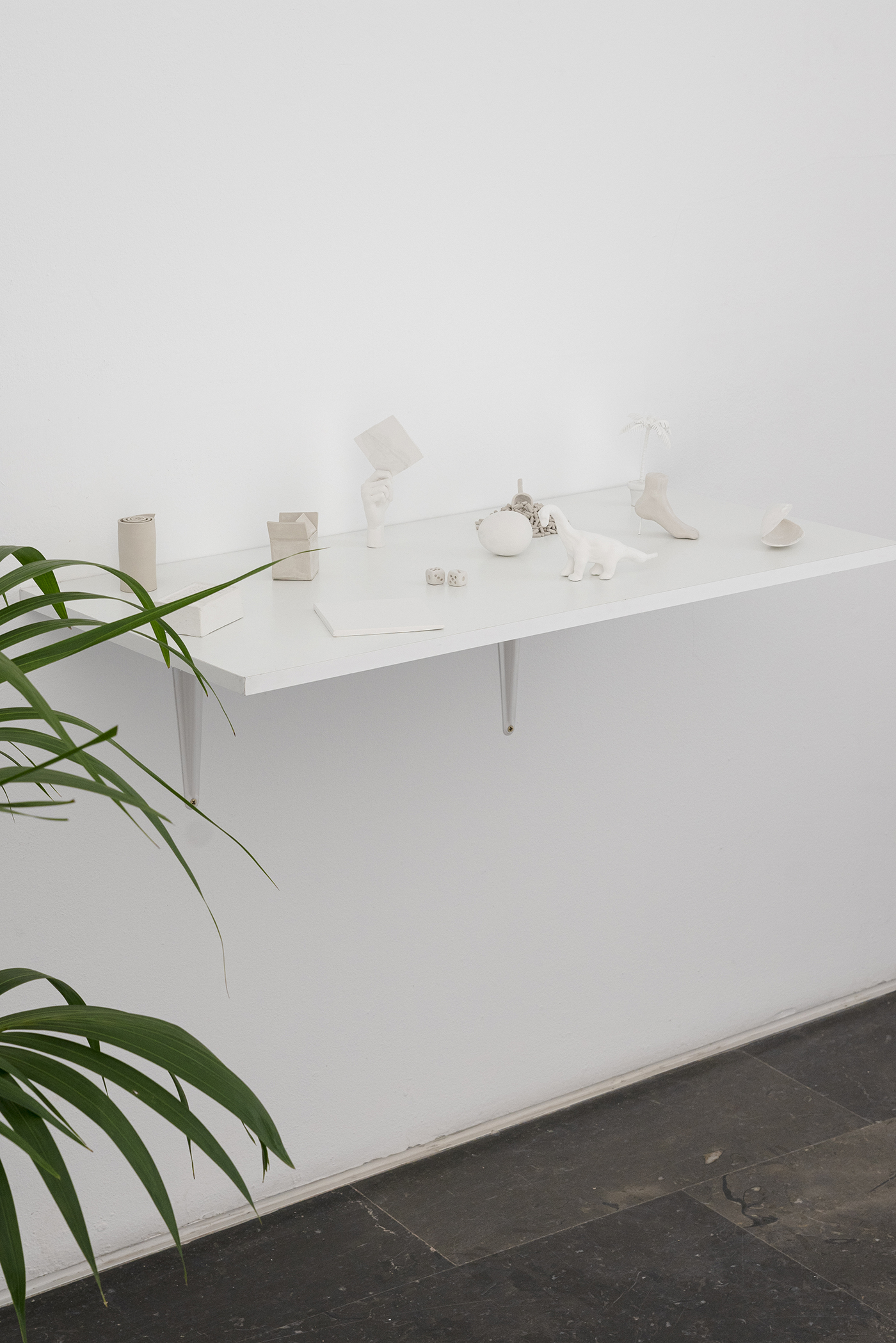
Esperanza Collado. Loose Ends, 2022. Installation with loop film (super 16mm, b/w and color, 4’), roll of felt (80 cm x 10 m), adhesive vinyl (2 x 3.90 m) and 12 pieces of clay and plaster. Detail

Esperanza Collado. Loose Ends, 2022. Installation with loop film (super 16mm, b/w and color, 4’), roll of felt (80 cm x 10 m), adhesive vinyl (2 x 3.90 m) and 12 pieces of clay and plaster. Detail

Esperanza Collado. Loose Ends, 2022. Installation with loop film (super 16mm, b/w and color, 4’), roll of felt (80 cm x 10 m), adhesive vinyl (2 x 3.90 m) and 12 pieces of clay and plaster. Detail

Esperanza Collado. Loose Ends, 2022. Installation with loop film (super 16mm, b/w and color, 4’), roll of felt (80 cm x 10 m), adhesive vinyl (2 x 3.90 m) and 12 pieces of clay and plaster. Detail

Esperanza Collado. Loose Ends, 2022. Installation with loop film (super 16mm, b/w and color, 4’), roll of felt (80 cm x 10 m), adhesive vinyl (2 x 3.90 m) and 12 pieces of clay and plaster. Detail

Esperanza Collado. Loose Ends, 2022. Installation with loop film (super 16mm, b/w and color, 4’), roll of felt (80 cm x 10 m), adhesive vinyl (2 x 3.90 m) and 12 pieces of clay and plaster. Detail

Broken Open, 2022. Room 4. General view

M Reme Silvestre. Sin título, 2021. Cabin filter and human hair. 29 x 17.7 x 3 cm

M Reme Silvestre. Sin título, 2021. Cabin filter and human hair. 29 x 17.7 x 3 cm. Detail

Alfredo Rodríguez. Clue, 2022. Silver gelatin on RC paper, lacquered aluminum and synthetic resin. 70 x 50 cm

Broken Open, 2022. Room 4. General view

Yann Sérandour. Mirror #546, 2011. UV printing on brushed aluminum. 121 x 98.4 cm

Broken Open, 2022. Room 4. General view

Broken Open, 2022. Room 4. General view

Victor Santamarina. Foundation V, 2021. Aluminum. 108 x 75 x 5 cm

Ana Martínez Fernández. Gorra I (lascas), 2021. Dyed epoxy resin, dried paint chips. 28 x 18 x 10 cm

Ana Martínez Fernández. Gorra I (lascas), 2021. Dyed epoxy resin, dried paint chips. 28 x 18 x 10 cm
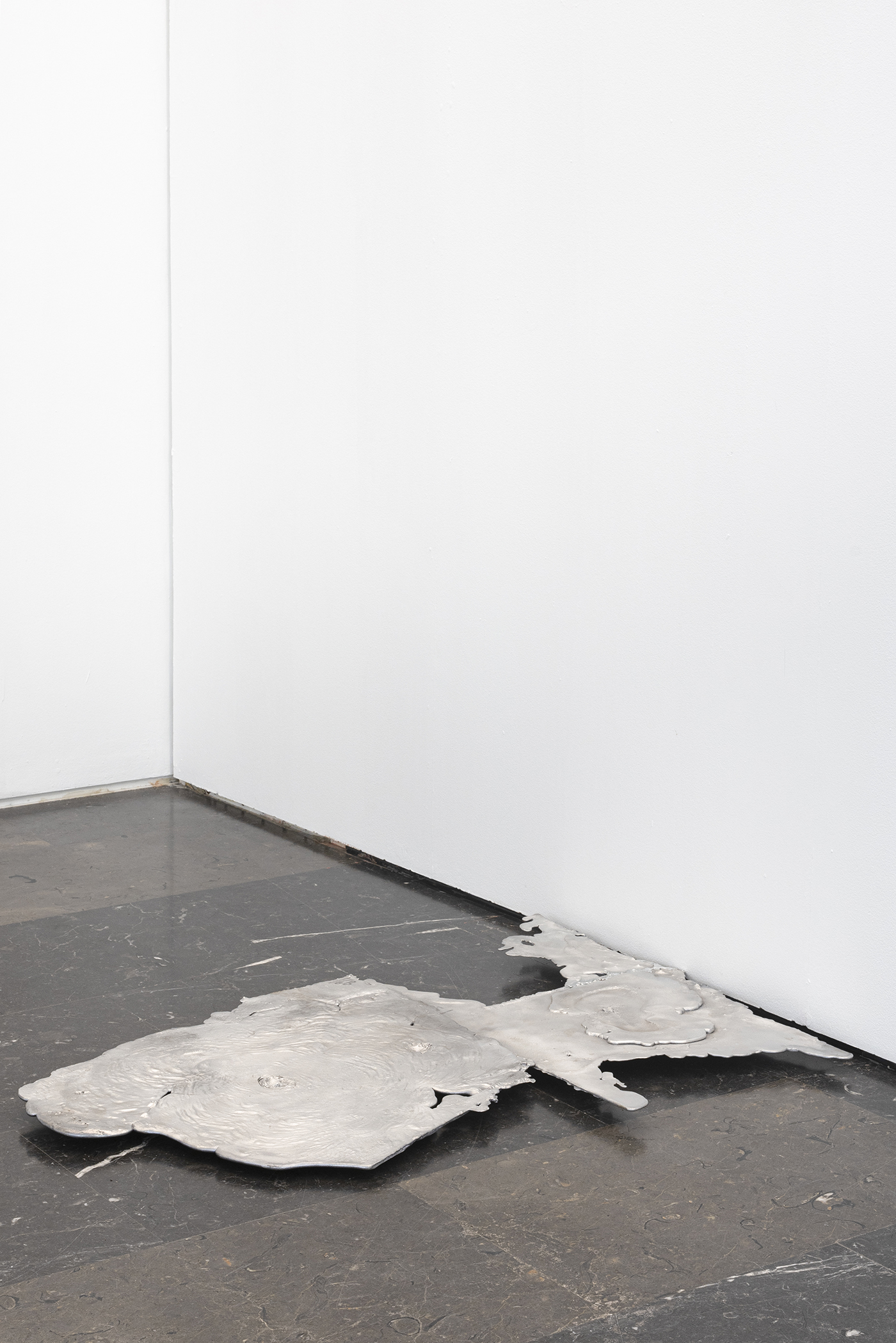
Victor Santamarina. Foundation IV, 2021. Aluminum. 98 x 75 x 5 cm

Yann Sérandour. Mirror #743, 2011. UV printing on brushed aluminum. 110.5 x 61.3 cm

Leticia Ybarra. I Shouldn’t Say Cat, 2022. Gardening gloves, finger puppets, stainless steel puppet control rods, ink. Variable dimensions

Leticia Ybarra. I Shouldn’t Say Cat, 2022. Gardening gloves, finger puppets, stainless steel puppet control rods, ink. Variable dimensions. Detail

Broken Open, 2022. Room 5. General view

Alex Reynolds. Palais, del pie al ojo a la mano, 2930”, 2022. Diptych, pencil on paper. 51.5 x 66 cm / 51.5 x 42.5 cm

Alex Reynolds. Palais, del pie al ojo a la mano, 2930”, 2022. Diptych, pencil on paper. 51.5 x 66 cm / 51.5 x 42.5 cm. Detalle

Alex Reynolds. Palais, 2020. HD video. 34’ 40’’

Alex Reynolds. Palais, 2020. HD video. 34’ 40’’

Alex Reynolds. Palais, 2020. HD video. 34’ 40’’
Text
idea at the heart of the project is intrigue, addressed as an entanglement, mesh or knot that acts as a thread that will lead our bodies on a walkthrough of the gallery’s various spaces. The series of textiles, sculptures, objects, photographs, installations and audiovisual works we come across in the various rooms trigger all kinds of disparate stories indulging the imagination and speculative pleasure.
if drawing, conjuring figures and elements that create a score for a larger action, and also highly intimate scenes divested of any sense of linear narrative. One of them contains the inscription À mon seul désir (To my only desire), a quotation referring to The Lady and the Unicorn who silently dwell within the medieval tapestries Mercedes visited at the Musée de Cluny in Paris. The other textile has the word “Ruda” sewn on it, in reference to the plant which was believed to have protective and abortive powers and was used in magical rites since ancient times. The etymology of ruta is derived from the Latin rupta (a paved, cleared or ‘broken’ road).
We would like to thank the collaboration of all the artists as well as the galleries Espacio Valverde, Madrid; gb agency, Paris; NoguerasBlanchard, Barcelona/Madrid; Travesía Cuatro, Madrid and SUPRAINFINIT, Romania and Faculty of Fine Arts of Cuenca.

